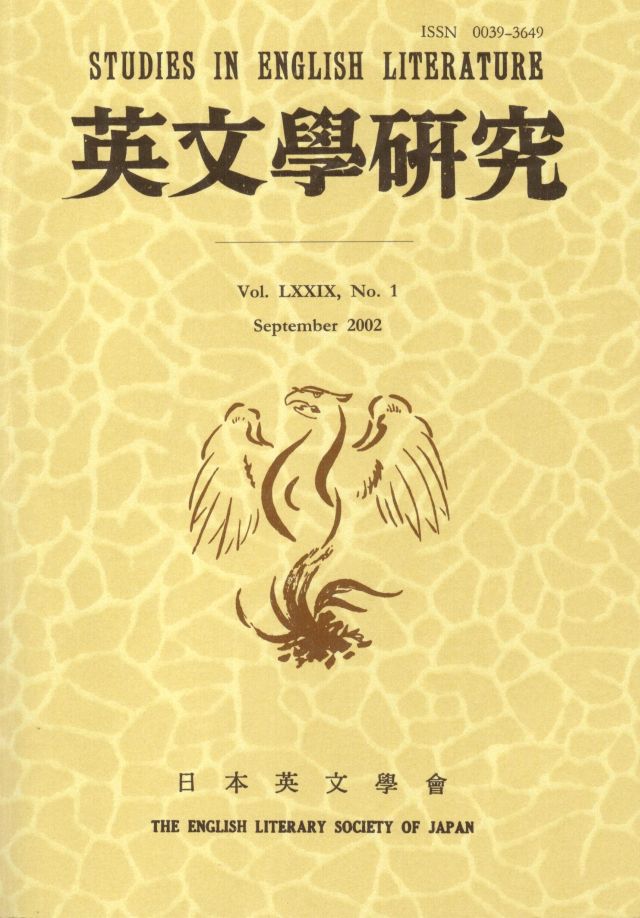Volume 27, Issue 1
Displaying 1-23 of 23 articles from this issue
- |<
- <
- 1
- >
- >|
-
Article type: Cover
1950 Volume 27 Issue 1 Pages Cover1-
Published: August 01, 1950
Released on J-STAGE: April 10, 2017
Download PDF (27K) -
Article type: Index
1950 Volume 27 Issue 1 Pages Toc1-
Published: August 01, 1950
Released on J-STAGE: April 10, 2017
Download PDF (33K) -
Article type: Article
1950 Volume 27 Issue 1 Pages 1-35
Published: August 01, 1950
Released on J-STAGE: April 10, 2017
Download PDF (2308K) -
Article type: Article
1950 Volume 27 Issue 1 Pages 36-45
Published: August 01, 1950
Released on J-STAGE: April 10, 2017
Download PDF (671K) -
Article type: Article
1950 Volume 27 Issue 1 Pages 46-60
Published: August 01, 1950
Released on J-STAGE: April 10, 2017
Download PDF (1336K) -
Article type: Article
1950 Volume 27 Issue 1 Pages 61-74
Published: August 01, 1950
Released on J-STAGE: April 10, 2017
Download PDF (1220K) -
Article type: Article
1950 Volume 27 Issue 1 Pages 75-91
Published: August 01, 1950
Released on J-STAGE: April 10, 2017
Download PDF (1119K) -
Article type: Article
1950 Volume 27 Issue 1 Pages 92-98
Published: August 01, 1950
Released on J-STAGE: April 10, 2017
Download PDF (596K) -
Article type: Article
1950 Volume 27 Issue 1 Pages 98-100
Published: August 01, 1950
Released on J-STAGE: April 10, 2017
Download PDF (251K) -
Article type: Article
1950 Volume 27 Issue 1 Pages 100-105
Published: August 01, 1950
Released on J-STAGE: April 10, 2017
Download PDF (483K) -
Article type: Article
1950 Volume 27 Issue 1 Pages 106-111
Published: August 01, 1950
Released on J-STAGE: April 10, 2017
Download PDF (506K) -
Article type: Article
1950 Volume 27 Issue 1 Pages 111-113
Published: August 01, 1950
Released on J-STAGE: April 10, 2017
Download PDF (302K) -
Article type: Article
1950 Volume 27 Issue 1 Pages 113-118
Published: August 01, 1950
Released on J-STAGE: April 10, 2017
Download PDF (542K) -
Article type: Article
1950 Volume 27 Issue 1 Pages 118-123
Published: August 01, 1950
Released on J-STAGE: April 10, 2017
Download PDF (500K) -
Article type: Bibliography
1950 Volume 27 Issue 1 Pages 124-129
Published: August 01, 1950
Released on J-STAGE: April 10, 2017
Download PDF (311K) -
Article type: Bibliography
1950 Volume 27 Issue 1 Pages 129-
Published: August 01, 1950
Released on J-STAGE: April 10, 2017
Download PDF (60K) -
Article type: Appendix
1950 Volume 27 Issue 1 Pages 130-133
Published: August 01, 1950
Released on J-STAGE: April 10, 2017
Download PDF (255K) -
Article type: Appendix
1950 Volume 27 Issue 1 Pages 133-
Published: August 01, 1950
Released on J-STAGE: April 10, 2017
Download PDF (51K) -
Article type: Appendix
1950 Volume 27 Issue 1 Pages 133-139
Published: August 01, 1950
Released on J-STAGE: April 10, 2017
Download PDF (434K) -
Article type: Appendix
1950 Volume 27 Issue 1 Pages 139-142
Published: August 01, 1950
Released on J-STAGE: April 10, 2017
Download PDF (235K) -
Article type: Appendix
1950 Volume 27 Issue 1 Pages App1-
Published: August 01, 1950
Released on J-STAGE: April 10, 2017
Download PDF (54K) -
Article type: Appendix
1950 Volume 27 Issue 1 Pages App2-
Published: August 01, 1950
Released on J-STAGE: April 10, 2017
Download PDF (54K) -
Article type: Appendix
1950 Volume 27 Issue 1 Pages App3-
Published: August 01, 1950
Released on J-STAGE: April 10, 2017
Download PDF (54K)
- |<
- <
- 1
- >
- >|
